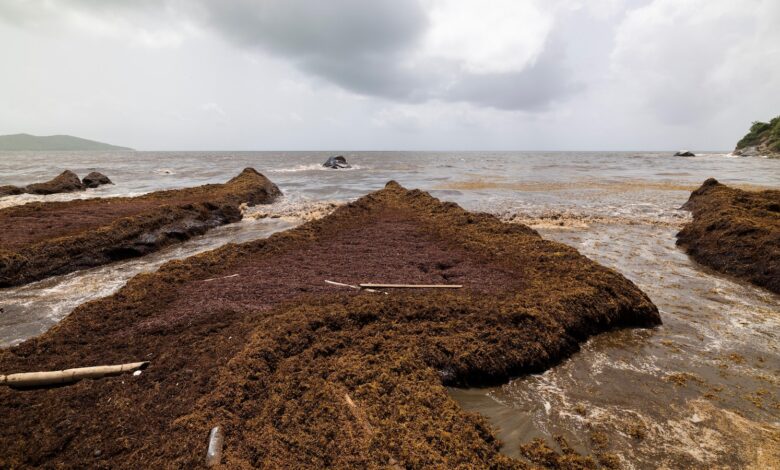Scientists say a record amount of seaweed hit the Caribbean and nearby areas in May

Record Amount of Sargassum Hits Caribbean, Threatening Wildlife and Tourism
A staggering amount of sargassum seaweed has inundated the Caribbean and nearby regions in May, with experts predicting even more for the coming month. This brown algae is causing chaos along coastlines from Puerto Rico to Guyana, impacting tourism, endangering wildlife, and even emitting toxic gases that led to the closure of a school in Martinique.
The quantity of sargassum, totaling 38 million metric tons, marks a record high across the Caribbean Sea, the Atlantic, and the Gulf of Mexico. Scientists are puzzled by the exponential growth in sargassum, with factors such as sunlight, nutrients, and water temperature being key areas of study.
Climate change, agricultural runoff, and variations in wind patterns are believed to contribute to the proliferation of sargassum. While the algae plays a vital role in ocean ecosystems, excessive amounts near shorelines can have devastating effects, blocking sunlight needed by coral reefs and smothering marine life.
Efforts to combat the sargassum invasion vary across the region, with some areas investing in barriers to prevent its arrival on beaches. However, the cost of cleanup remains a challenge for many islands, with hotels often taking on the responsibility. The situation is expected to worsen in the coming months, posing a significant threat to the environment and local economies.
For more news on Latin America and the Caribbean, visit AP News.





